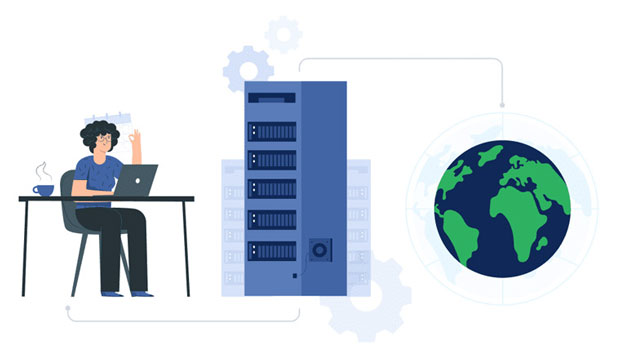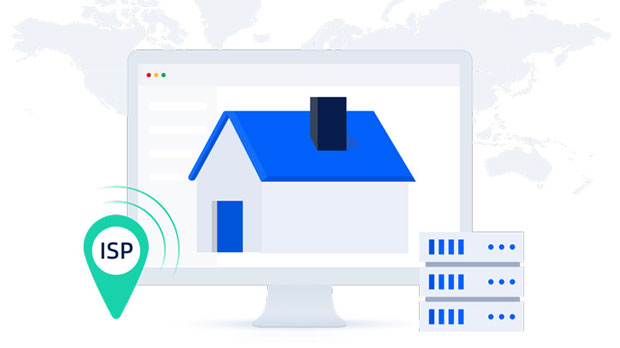How to obtain IP addresses in batches through proxy servers?
In today's digital landscape, the need for bulk IP address retrieval has become more common. Whether for web scraping, testing, or enhancing online anonymity, proxy servers serve as a powerful tool for obtaining large volumes of IP addresses. A proxy server acts as an intermediary between a user and the internet, masking the user's real IP address and providing another IP address for communication. This allows users to retrieve multiple IP addresses simultaneously, bypass restrictions, and increase privacy. This article explores the methods and techniques for bulk retrieving IP addresses using proxy servers, as well as the benefits and challenges involved. Understanding Proxy Servers and Their Role in Retrieving IP AddressesProxy servers are essential components of modern network infrastructure. They function by routing requests from a client (such as a web browser or an application) through a remote server before reaching the target destination. This process hides the client’s actual IP address, replacing it with the IP address of the proxy server.The primary role of a proxy server in IP retrieval is to act as an intermediary that facilitates secure and anonymous browsing. When a client sends a request to access a website, the proxy server forwards this request, masking the client’s original IP address. As a result, the website only sees the IP address of the proxy, allowing multiple IPs to be used in parallel. This can be particularly useful for tasks like web scraping, bypassing geolocation restrictions, and automating tasks across numerous IP addresses.Methods for Bulk IP Address RetrievalThere are several approaches to bulk retrieving IP addresses using proxy servers, and these methods vary based on the scale of the task and the resources available.1. Utilizing Public Proxy ListsPublic proxy lists are one of the easiest and most cost-effective ways to obtain IP addresses in bulk. These lists are freely available on various online platforms and include proxy ips from different geographical locations and types (e.g., HTTP, SOCKS5). By using these lists, users can set up proxy configurations in their applications to route requests through these proxy ips.However, there are some drawbacks to using public proxy lists. The proxies found on these lists are often unreliable, slow, and can become blocked quickly. Additionally, security can be an issue, as malicious actors may operate some of these proxies, which can compromise data privacy.2. Purchasing Private Proxy PoolsFor users requiring a more reliable and secure solution, purchasing a private proxy pool is an excellent option. A proxy pool is a collection of IP addresses that can be rotated to provide a fresh IP address for each request. These proxy pools are typically offered by specialized providers who maintain high standards for quality, security, and performance.Private proxy pools offer several advantages, including faster speeds, enhanced security, and the ability to rotate IP addresses at regular intervals to avoid detection. Additionally, these proxies are less likely to be blocked or flagged compared to public proxies.3. Using residential proxiesResidential proxies are another powerful tool for bulk IP retrieval. These proxies route requests through real user devices, making the IP addresses appear as though they are coming from actual users rather than proxy servers. This helps to avoid detection and is ideal for tasks such as web scraping, where appearing as a regular user is critical.Unlike data center proxies, residential proxies are typically harder to block because they come from a wide range of devices and ISPs. While more expensive, they offer enhanced reliability and anonymity.4. Implementing Rotating ProxiesRotating proxies are essential for managing bulk IP retrieval, especially in scenarios where users need to make numerous requests to a website or service without getting blocked. These proxies rotate automatically, ensuring that each request is sent from a different IP address. This method is crucial for tasks such as web scraping, where using a single IP address for all requests would lead to IP blocking.Rotating proxies can be configured manually or through third-party services that offer automated IP rotation. This provides a seamless experience for users who need to perform tasks at scale, like data scraping or testing across multiple IP addresses.Advantages of Bulk IP Retrieval Using Proxy Servers1. Enhanced Privacy and AnonymityOne of the main benefits of using proxy servers to retrieve IP addresses in bulk is the increased level of privacy and anonymity they provide. By masking the user’s real IP address, proxies help to protect against tracking, surveillance, and data collection from websites and services.For businesses and individuals who value privacy, proxy servers are an essential tool in ensuring their online activities remain confidential.2. Bypassing Geo-restrictionsProxy servers enable users to bypass geographic restrictions and access content that may be blocked in their region. For example, a proxy located in a specific country can make it appear as though the user is accessing the internet from that country, allowing them to view region-specific content.This is particularly useful for tasks like web scraping, where access to content from various regions is required, or for accessing services and websites that impose geo-blocking.3. Avoiding IP BansWeb scraping and automation tasks often involve making large numbers of requests to a website. If the website detects too many requests from the same IP address, it may block or limit access to that IP. By using proxy servers and rotating IP addresses, users can avoid detection and minimize the risk of IP bans.This ensures that the task continues without interruptions, even when a website implements anti-bot measures.Challenges of Bulk IP Retrieval1. Proxy Quality and ReliabilityWhile proxy servers offer significant benefits, the quality and reliability of the proxies can vary greatly. Public proxy lists, for example, may contain slow or unreliable proxies that can hinder performance. To ensure the best results, it is crucial to use high-quality proxies from reputable sources.2. IP Blocking and CAPTCHA ChallengesMany websites actively monitor for unusual traffic patterns and may block IPs that generate excessive requests. While rotating proxies help mitigate this issue, some websites implement sophisticated CAPTCHA systems that prevent automated access. Overcoming these challenges may require additional strategies, such as using CAPTCHA-solving services or investing in more advanced proxy solutions.3. Cost ConsiderationsFor users who require a large number of proxies, the cost can quickly add up. Residential proxies, in particular, tend to be more expensive than data center proxies. Additionally, services that offer IP rotation or proxy pools may charge a premium for high-quality, secure IP addresses. Budgeting for these costs is essential for those who need to retrieve IPs at scale.ConclusionBulk IP retrieval through proxy servers is a valuable tool for various use cases, including web scraping, testing, and ensuring anonymity online. By utilizing different proxy methods such as public proxy lists, private proxy pools, residential proxies, and rotating proxies, users can effectively manage and automate the process of retrieving IP addresses. However, it is essential to consider the challenges involved, such as proxy quality, IP blocking, and cost. With the right approach, proxy servers can provide a robust solution for bulk IP retrieval, enabling users to achieve their goals efficiently and securely.
2025-01-26

























































